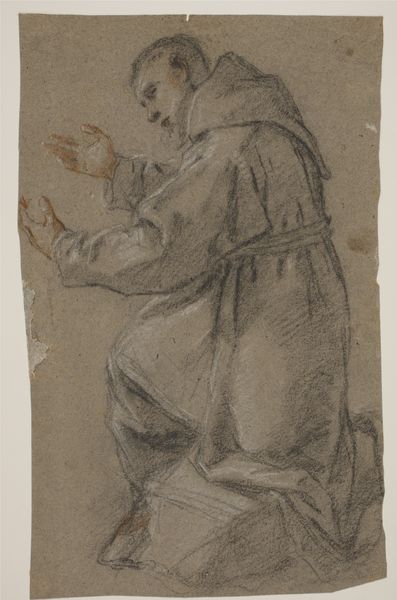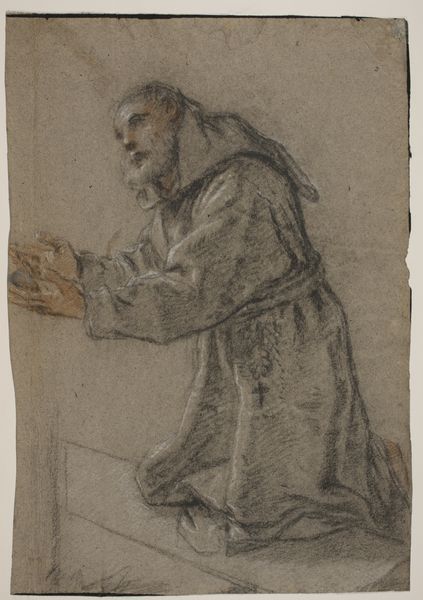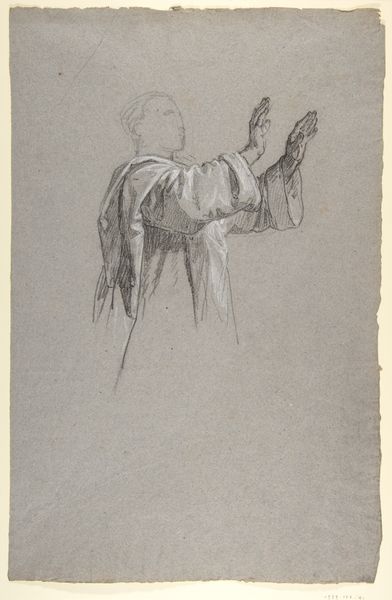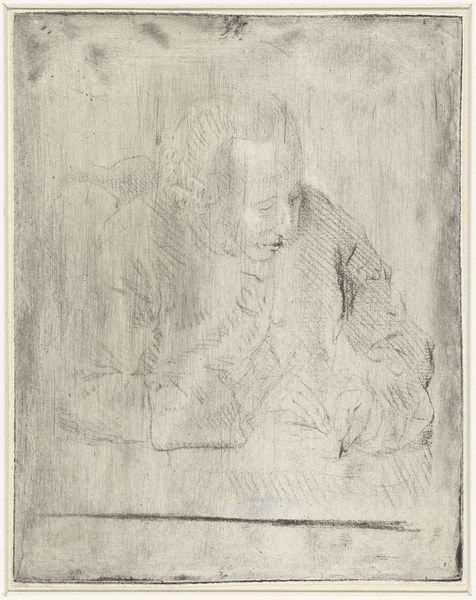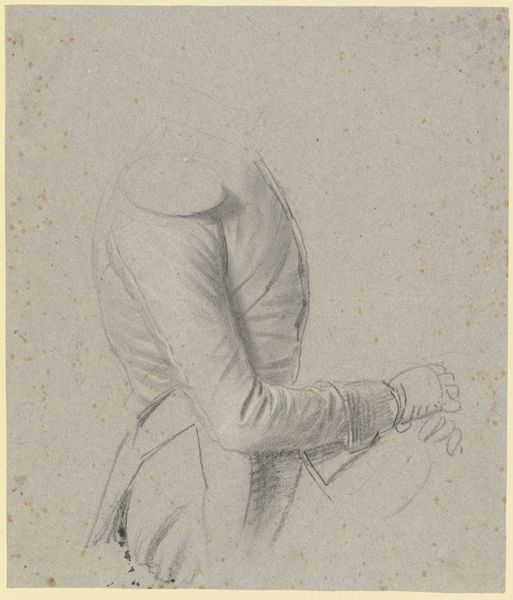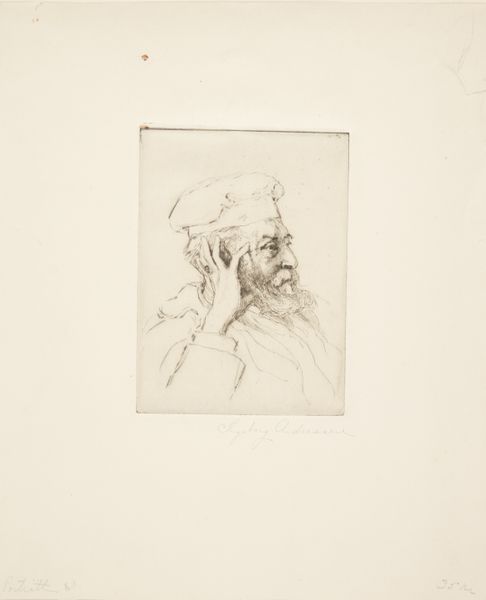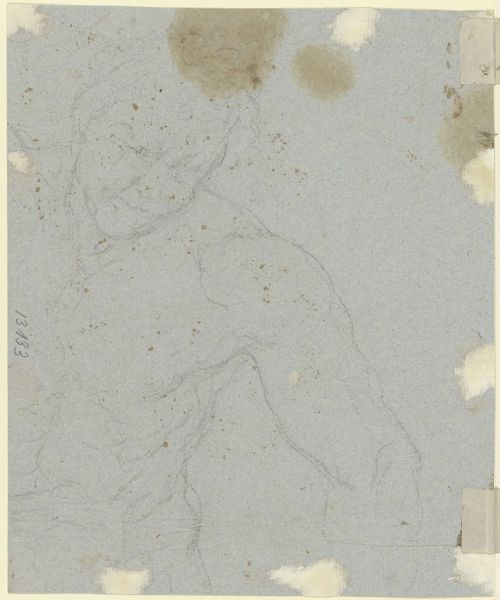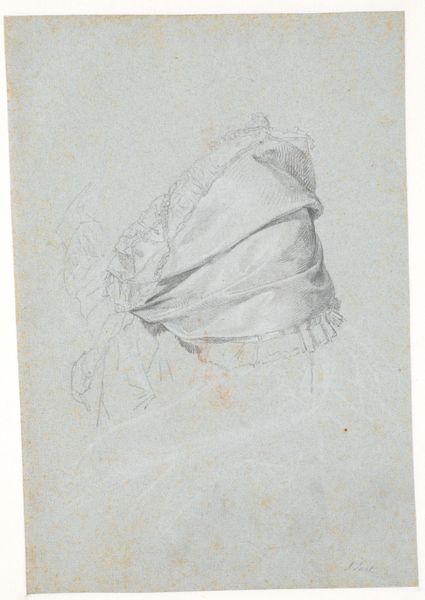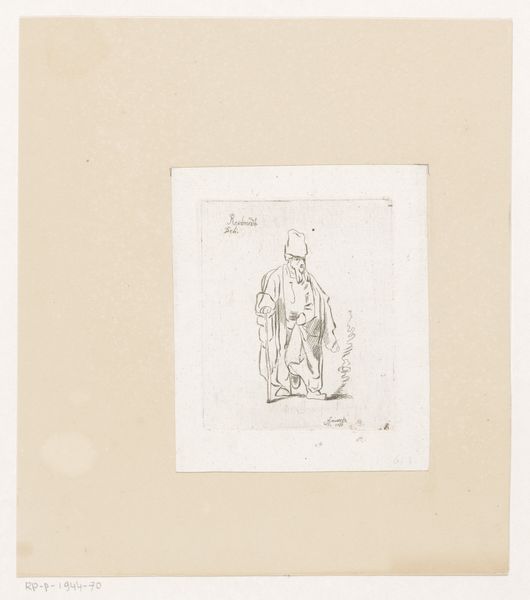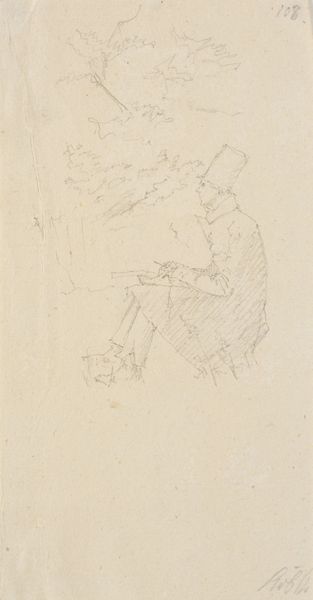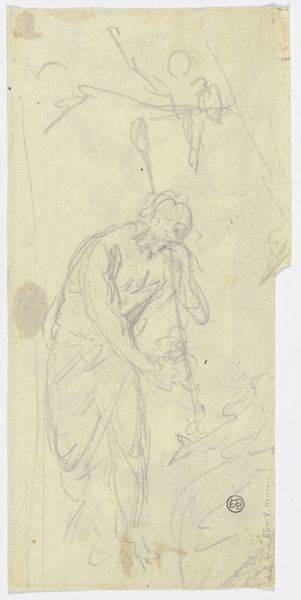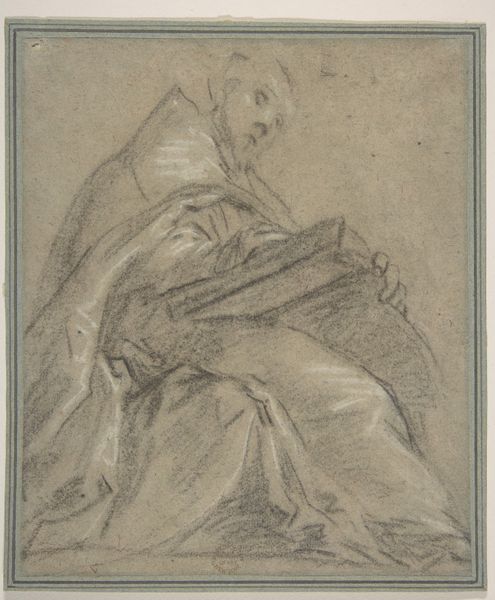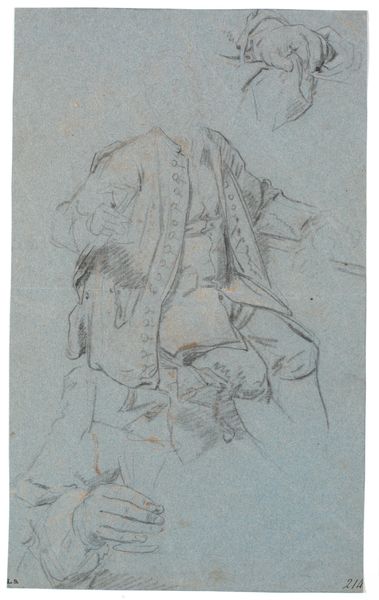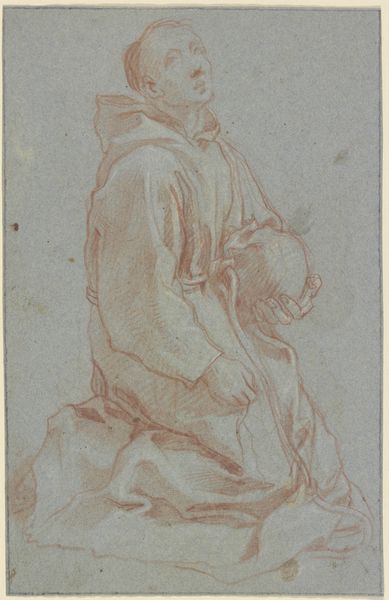
En siddende bonde rækker en seddel frem med højre hånd, i venstre hånd en krukke 1675 - 1704
0:00
0:00
drawing, pencil
#
portrait
#
drawing
#
dutch-golden-age
#
pencil
#
genre-painting
Dimensions: 207 mm (height) x 147 mm (width) (bladmaal)
Curator: Here we have Cornelis Dusart's drawing, "En siddende bonde rækker en seddel frem med højre hånd, i venstre hånd en krukke," dating from between 1675 and 1704. It's a fascinating example of Dutch Golden Age genre painting, executed with pencil. Editor: It’s quite stark, isn't it? Immediately, I'm struck by the raw, almost unfinished quality. The man's face is rather vague. Is he haggling? Begging? The document he presents seems central. Curator: Indeed, it raises questions. Dusart often depicted scenes of peasant life, contributing to the visual culture of the time. The material aspects of the drawing, the quality of the paper, the graphite, it all speaks to artistic choices and the means of producing imagery for circulation. What kind of paper would have been typical? Who would have been purchasing art of this nature? Editor: Right, let’s not forget about social context and audience here. During the Dutch Golden Age, genre painting, focusing on everyday life, experienced popularity with the emerging middle class. These scenes mirrored their own existence, providing a sense of comfort and perhaps moral instruction. Museums and galleries would not even been on the scene yet in this century - what kind of distribution would this work had then? Curator: Perhaps studies for larger pieces, made accessible through prints? What seems interesting to me, is that his status as an everyman might also suggest the negotiation of the changing economy during this time. The pot and paper might denote that very well. Editor: I'm inclined to agree. Think about the social hierarchy. This piece gives us some understanding to the labor and livelihoods in this period. The peasant presents his goods while presumably seeking fair payment or transaction of business; art illustrating, subtly perhaps, power relations during the growth of commercial activity. Curator: Precisely! I think investigating those aspects helps appreciate it more deeply. The simplicity actually reveals volumes about the dynamics of its historical moment and the means used to reproduce that kind of vision for wider circulation and consumption. Editor: Absolutely. It shows how the mundane is anything but. Art can unlock a wealth of information for future generations, helping them understand those periods more accurately. I wonder about its critical reception back then and about Dusart's reputation among the collectors...
Comments
No comments
Be the first to comment and join the conversation on the ultimate creative platform.
